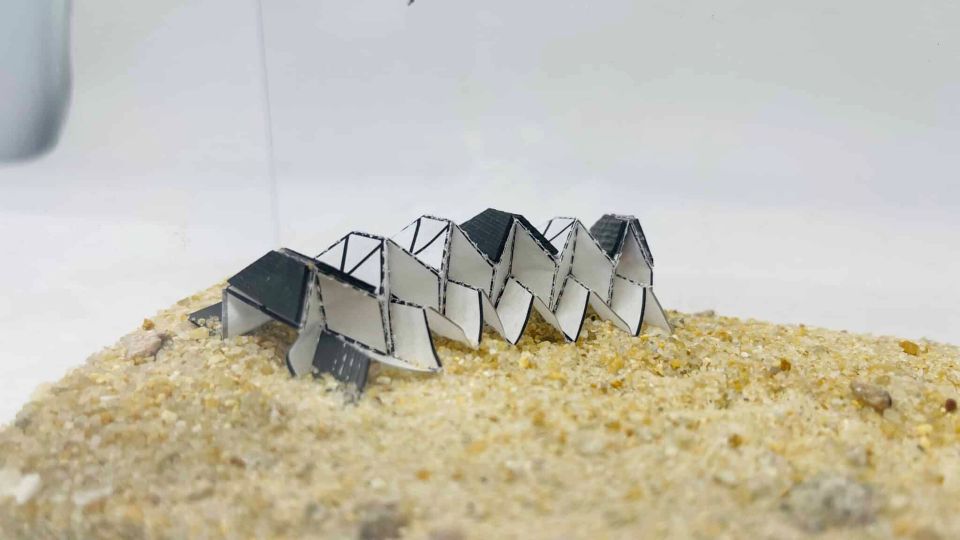By infusing rubber-like elastomers with ferromagnetic particles, the team at North Carolina State University produced a flexible magnetic film that can be attached to folded origami structures.
When exposed to a magnetic field, the film acts as an actuator, powering precise movement without disrupting the delicate mechanics of the origami itself. The research is detailed in Advanced Functional Materials.
This type of soft magnet is unique in how little space it takes up, said Xiaomeng Fang, assistant professor in the Wilson College of Textiles and lead author of the paper on the technique.
“Traditionally, magnetic actuators use the kinds of small rigid magnets you might put on your refrigerator. You place those magnets on the surface of the soft robot, and they would make it move,” she said in a statement. “With this technique, we can print a thin film which we can place directly onto the important parts of the origami robot without reducing its surface area much.”
Scientists designed their primary robot to deliver medicine to ulcers inside the human body, using an origami pattern called Miura-Ori. The technique allows a large flat surface to fold into a much smaller area. The magnetic ‘muscles’ are attached to facets of the origami, so when exposed to a magnetic field, they help the origami open up and navigate to the ulcer location. The Miura-Ori design is well-suited to administering medicine, Fang said, because it can be ingested as a small object and then open to deliver medicine with its entire surface area.
The researchers tested the robot using a mock stomach made of a plastic sphere filled with warm water. Guiding the robot through the stomach using external magnetism, researchers successfully manoeuvred it to an ulcer site, deployed it into its unfolded state, and secured it in place by externally attached soft magnetic films. This setup enabled controlled and steady drug release over time.
Previous attempts to use ferromagnetic particles have struggled to generate enough force to move robots, Fang said, because they were not able to pack enough particles into the rubber solution. Adding a large quantity of particles turns the liquid rubber black, which absorbs the UV used to solidify the solution and keeps it from curing properly. Thermal energy can also help solidify the rubber, so researchers added a hot plate underneath the collecting plate to augment their UV light.
“Adding the hot plate meant that we could use a much higher concentration of ferromagnetic particles than usual, which was the real breakthrough,” said Fang. “The more particles you are able to use, the more magnetic force you are able to generate.”
Fang added that there are many types of origami structures that these muscles can work with, and they can help solve problems in fields including biomedicine to space exploration.

